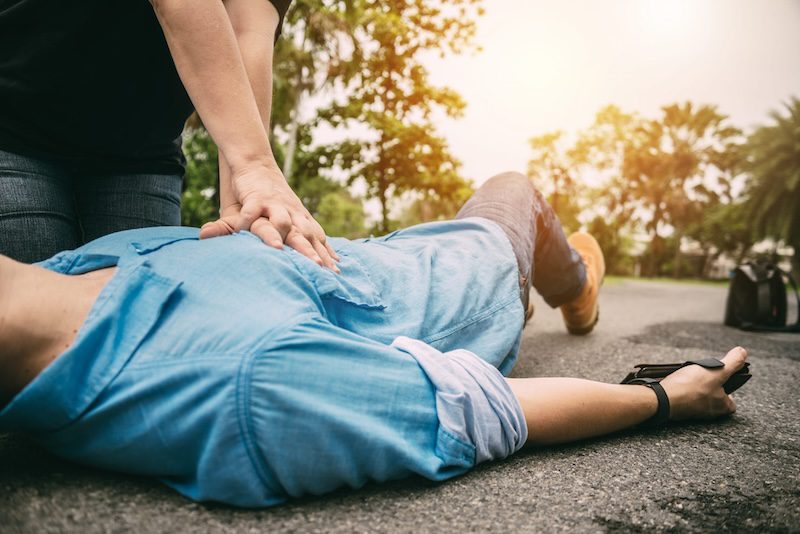General
Cardiopulmonary Resuscitation (CPR) is a combination of rescue breathing and chest compressions, to keep oxygenated blood circulating until a heartbeat and breathing can be restored. Brain damage or death can occur within minutes if blood flow stops.
Artificial Respiration
Shake the person gently. Shout, “Are you OK?”. If unresponsive – call for medical aid. Carefully place the camper on their back. In case of a suspected spinal injury, move the camper without twisting the head and neck. Open the airway by lifting the chin with 2 fingers, while pushing down on the forehead with the other hand. Look, listen, and feel for normal breathing for 5 to 10 seconds.
If the camper is not breathing:
- Cover the person’s mouth tightly with your mouth,
- Pinch the nose closed,
- Keep the chin lifted and give 2 normal breaths – each 1 second long,
- Do not give full, forceful breaths,
- If the chest does not rise – try the chin lift-head tilt again, and give 2 more breaths,
- If the chest still doesn’t rise – check for an airway blockage and try to remove it.
Cardiac Compressions
Do not check for signs of circulation if the person is not breathing:
- Place the heel of one hand at the centre of the chest between the nipples,
- Place your other hand on top of the first hand,
- Position your body squarely over your shoulders in line with your hands,
- Give 30 chest compressions,
- Each compression – press down about 1/3 to 1/2 the depth of the chest or 5 cm,
- Each compression – let the chest rise completely,
- These compressions should be fast with no pausing.
Repeat the Process
Repeat the above cycles of 2 breaths and 30 compressions until the person recovers or help arrives. If the person starts breathing again, place in the recovery position and monitor. Keep going until medical assistance arrives.
NOTE: If a bystander is not trained in CPR, the bystander should provide Hands-Only™ (compression-only) CPR for the adult victim who suddenly collapses, with an emphasis to “push hard and fast” on the centre of the chest, or follow the directions of the EMS dispatcher. The rescuer should continue Hands-Only CPR until an AED arrives and is ready for use or EMS providers or other responders take over care of the victim.
Reference: American Heart Association
IMPORTANT – The procedures described on this website are not a substitute for medical, first aid or CPR training. Always seek treatment from a trained medical professional whenever possible.





No responses yet